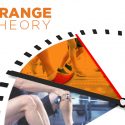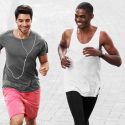Fitness Tracker 101
It seems like fitness tracking technology is really booming. People of all ages are tracking things like steps, calories burned, and sleeping. But what are the benefits? Are there error rates? Which devices are the best for the tracking you want to do? Well, we have done a little research to point you in the right direction. Regardless of your personal goal, using a fitness tracker is a great way to raise your awareness about how active you really are. It can also help motivate you to move more throughout the day.
Types of fitness trackers
Pedometers
A pedometer is a small device used to count how many steps you take. Usually, the pedometer is clipped near the waist. Here are some fast facts to consider.
- A good goal while using a pedometer is to reach 10,000 steps per day.
- Some pros of pedometers are they are inexpensive and easy to use.
- One drawback is that pedometers only measure one type of activity.
- Activities such as seated exercises or weight lifting may not be recorded well by pedometers.
- Pedometers only measure total activity for the day, not how long each bout of exercise lasted, and they have limited ability to predict calories burned.
Accelerometers
These are becoming more and more popular in the fitness markets. Basically they measure acceleration of motion. Accelerometers can be used to detect physical activity, speed, direction, and movement. Here are a few facts.
- An accelerometer is similar to a pedometer, but more sensitive and precise in its measurements.
- A good goal when using an accelerometer is to reach 150 minutes of exercise per week.
- Commonly purchased accelerometers include Jawbone, Fitbit, and Nike FuelBand.
- Some strengths of the accelerometer include advanced measurement of frequency, intensity, and duration of daily activity.
- Accelerometers are more accurate at measuring calories than pedometers, and some can monitor heart rate and sleep quality.
- Most accelerometers are also compatible with phones or computers so you can monitor your progress and goals through apps on your smartphone.
How reliable is the information collected in my fitness tracker?
The validity of available trackers varies greatly. It is important to research the tracker you currently use or may decide to purchase so that you are aware of the strengths and limitations.
- Most accelerometers have an error rate between 10% and 15%. The lower the error rate, the better the monitor. (The error rates of some common monitors are: Fitbit Zip: 10.1%; Fitbit One: 10.4%; Jawbone UP: 12.2%; and Nike FuelBand 13%).
- Although a 10% to 15% error rate may not seem large, if you are using the monitor to track calories burned, it may be incorrect by 200 to 300 calories. That could lead to weight loss OR weight gain, depending on whether the tracker is overestimating or underestimating.
- Using a fitness tracker that has the ability to measure skin heat response or heart rate is likely to be more accurate than a monitor that measures just steps or distance.
- Other considerations include information given via the sleep quality monitoring feature. It’s important to know this monitoring is based solely on movement or heart rate during sleep mode, and they are not considered valid measures of sleep quality.
Regardless of which fitness tracker you choose or your personal goals, using an activity monitor is a great way to motivate yourself to be more active during the day. The important part is researching the benefits and limitations of the device before you get started. You will also want to consider prices as they can vary dramatically between brands.
What fitness trackers do you use? Share your comments with us below!
Christine Jazwinski is an On-site Health Coaching Intern at UPMC Health Plan finishing up her Master’s degree in Clinical Health and Fitness at the University of Pittsburgh. When she’s not teaching group exercise or fulfilling her responsibilities as a Graduate Assistant in Pitt’s Department of Health and Physical Activity, Christine enjoys going on a run or finding new places around Pittsburgh to eat.



